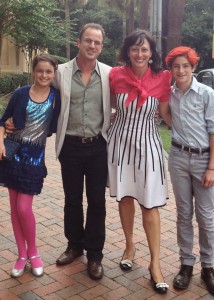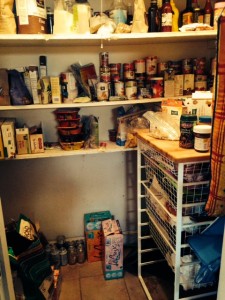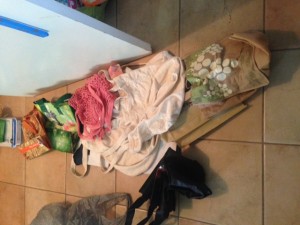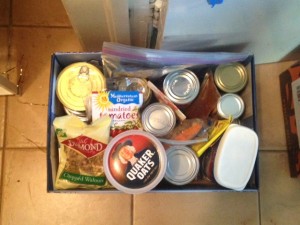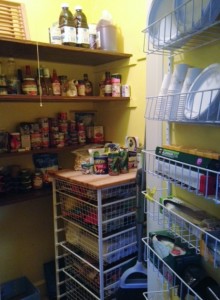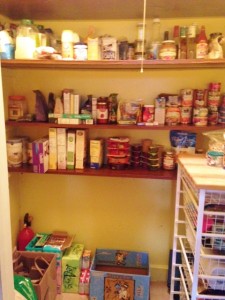Last week marked a special anniversary here at Yo, Yenta!: A whole decade of existence under my borscht belt.
Back in 2004, I hadn’t heard of a blog until my Bro the Doc and his buddies at Primetime Amusements decided to dip their toes into the Jewish dating site pool. Turns out it was more of a lake with room for only one behemoth-sized creature, but I have Jmerica.com to thank for providing me a platform in the then-burgeoning bloggy world. The internet has gotten faster, scarier and grown up around me like an L.A. freeway, yet somehow, I am still queen of this domain. (Congrats and much mazel to my homegirl Esther Kustanowitz and My Urban Kvetch, celebrating her 10th blogiversary this year, too!)
At the time I was a freelance writer in the most expensive county in California with two small kids. (Here we are circa 2004 visiting Tybee Island, GA, the native stomping grounds of El Yenta Man. Little did I know I would be living in the deep South just a few years later.)
I was not only grateful for the gig, but for the opportunity it afforded me to explore Judaism on the Internet. At first, I did a lot of snarky J-celebrity postings (remember Britney and her Zohar?!) but over the the years the space has become more about about this thing called “Jewish” and how to do it, whether it’s a birthright or a choice, a practice or a state of mind, a people or a heritage or a religion or a recipe or all of the above.
A whole decade has passed, and figuring out what it is to be a Jewish mother still feels important and interesting. I have always been determined to raise my children Jewish on my own terms, not by blindly following laws that I didn’t really feel beholden to nor by simply dropping my kids off at Sunday School and expecting little rabbis to happen.
I’ve filled in the gaps of my suburban Reform Hebrew school education with sites like MyJewishLearning.com and Aish.com. I’ve learned about crazy traditions like kapores and discovered the wonderful world of kosher gospel. I’ve been honored to meet modern Judaism’s musical superstars and spend time with the hilarious seniors and survivors of my community. I learned how to cook shakshuka and blintzes and make mezuzot out of dry cleaner hangers (but building a decent sukkah continues to elude us.)
In 2006, we moved across the country to Savannah, GA. My field study of the particular and peculiar practices of the Southern Jew continue to fascinate me. (And y’all, I hope. One day soon I’ll share my recipe for Mint Jewleps.)
Since then, I’ve shepherded five classes of kindergarteners for Shalom School. I’ve been lucky enough to gain an amazing sister-in-law, who’s only been Jewish for a year but already cooks way better matzah brie than me. My mother-in-law still continues to exist on this side of God’s delineation between heaven and earth, reminding me how strong the desire to live is and how every day is a blessing. Last year, I reached a huge milestone in the life of a Jewish mother, our son’s bar mitzvah, and I was so humbled by the genuine joy of celebrating with our family and community.
The past decade has all added up to a messy, loud, unorthodox Jewish life, full of contradictions and new twists on tradition and the occasional piece of bacon. I may not look or act like any other Jewish mother anyone else has ever seen nor any rabbi would probably approve of, but I think I do my ancestors proud by lighting candles on Fridays and shepping nachas when the kids make poetry out of the Yiddish refrigerator magnets. The Yenta house may not be close to kosher, but it’s full of love and faith and laughter, and I really do think that counts.
Of course, one of the hallmarks of being Jewish mother is a sense of low-level, residual guilt about all the things that still need to get done. I still haven’t written a book or memorized the Havdalah prayer or um, put away the Passover dishes. You should see the pile of laundry rising behind me like a hungry golem.
But I have no plans to go anywhere, even though I really do need to update that photo up top. In the next ten years, I hope Yo, Yenta! will continue to be a place for all the Jewish and “Jewish-ish” mothers and fathers — the ones by birth and ones by choice, the interfaith ones, the straight the gay, the Ashkenazi and the Sephardi, all of the colors and all of the stories, the ones looking for wisdom and those with wisdom to share.
It’s about bringing as much neshamah (soul) and ruach (spirit) to this party on Planet Earth, to raise our kids to be mensches, to shine our God light bright.
I may be no closer to defining what a Jewish mother is supposed to be, but it’s been a real gift to keep making it up as I go. I do know that there’s room for all kinds of rituals and beliefs, and I hope to show in my own bumbling way that a family doesn’t have to practice Judaism perfectly — or even exclusively — to have a vibrant, joyous, Jewish home.
Much mazel, nachas and love to you and yours ~ Yo, Yenta!


